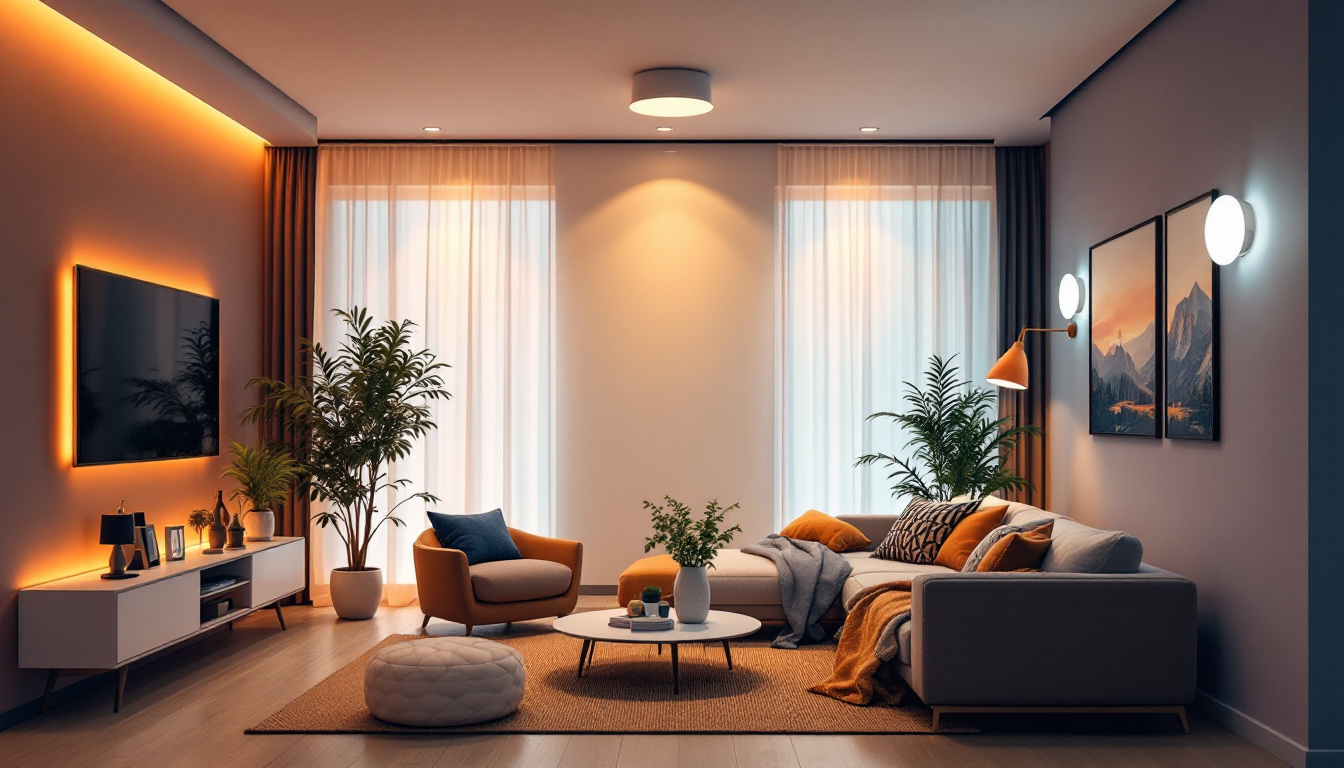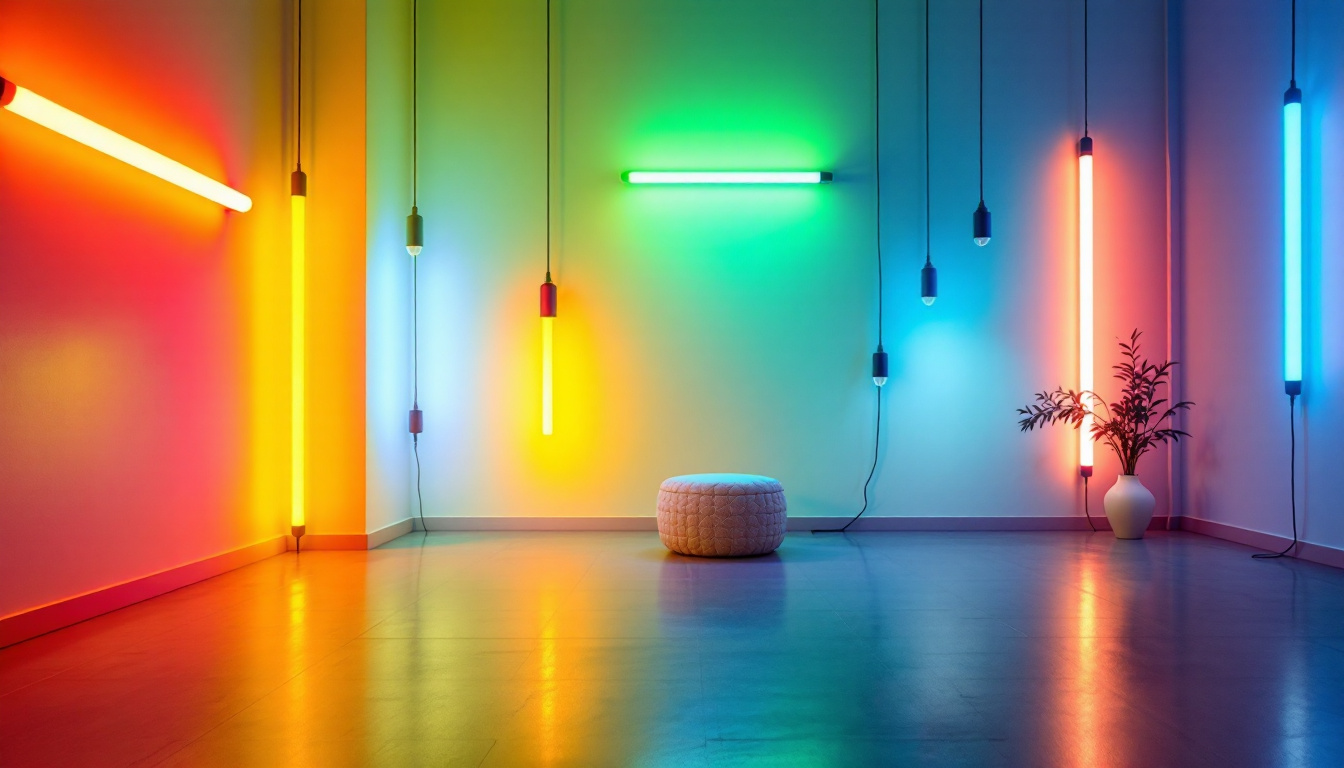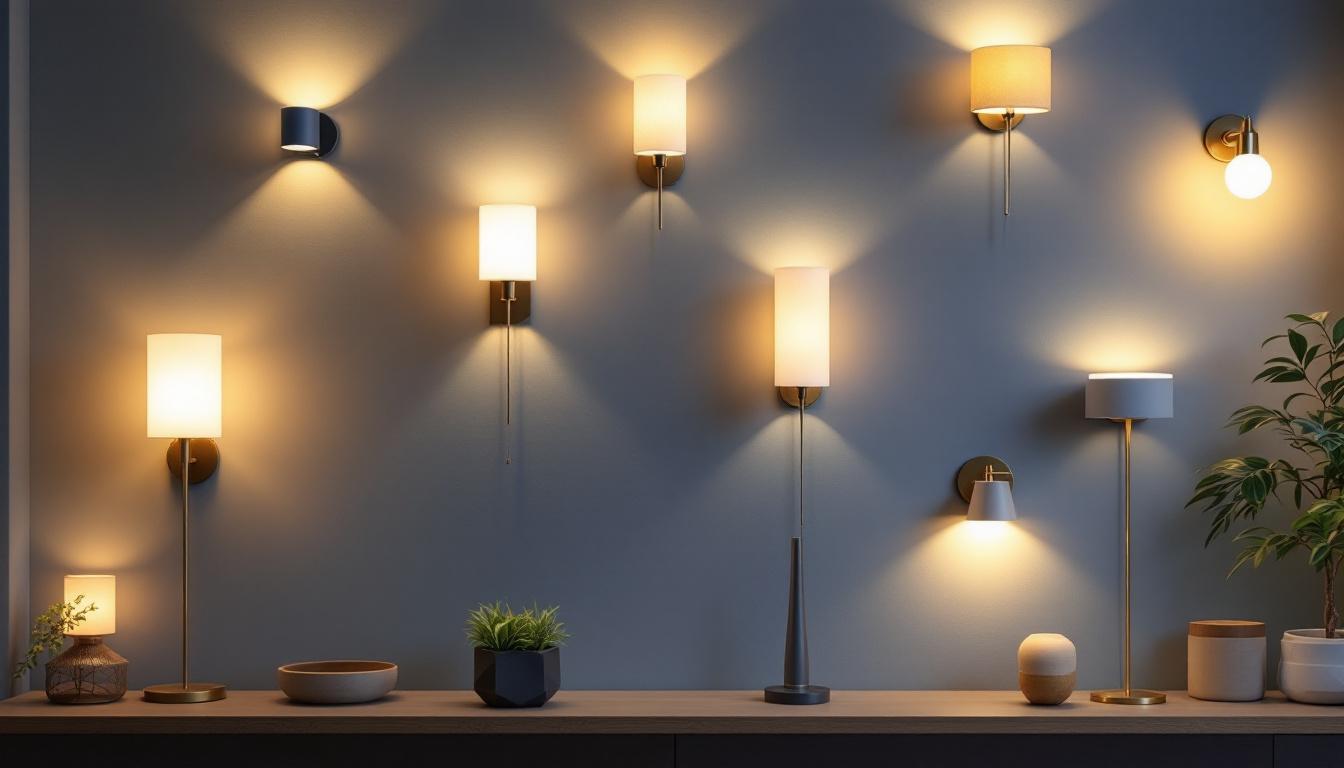
In recent years, the demand for energy-efficient lighting solutions has surged, and LED lights have emerged as a frontrunner in this arena. For lighting contractors, understanding the benefits and applications of LED technology is crucial for meeting client needs and staying competitive in the market. This article delves into the essential aspects of LED lighting for homes, highlighting its advantages, installation considerations, and future trends.
LED (Light Emitting Diode) technology has revolutionized the way homes are illuminated. Unlike traditional incandescent or fluorescent bulbs, LEDs offer a host of benefits that make them the preferred choice for energy-efficient lighting.
One of the most compelling reasons to switch to LED lighting is its energy efficiency. LEDs consume significantly less power compared to traditional bulbs, often using up to 80% less energy. This translates to lower electricity bills for homeowners and a reduced carbon footprint. For lighting contractors, promoting the energy-saving potential of LEDs can be a key selling point. Moreover, as energy costs continue to rise, the financial benefits of LED lighting become even more pronounced, making it an attractive option for both residential and commercial spaces. Many utility companies even offer rebates or incentives for switching to LED technology, further enhancing the appeal for consumers.
Another significant advantage of LED lights is their longevity. LEDs can last anywhere from 15,000 to 50,000 hours, far outpacing the lifespan of incandescent bulbs, which typically last about 1,000 hours. This durability not only reduces the frequency of replacements but also minimizes maintenance costs for homeowners. Contractors can emphasize this benefit to clients looking for long-term solutions. Additionally, the longer lifespan of LEDs means less waste in landfills, aligning with the growing trend towards sustainability and eco-conscious living. As more consumers become aware of their environmental impact, the appeal of long-lasting LED solutions continues to grow.
LEDs are incredibly versatile, available in various shapes, sizes, and color temperatures. This flexibility allows homeowners to achieve their desired aesthetic while enjoying energy efficiency. From recessed lighting to decorative fixtures, the design possibilities are virtually limitless. Lighting contractors can leverage this versatility to create customized lighting solutions that cater to individual client preferences. Furthermore, LEDs can be easily integrated with smart home technology, allowing for advanced features such as dimming, color changing, and remote control via smartphones. This integration not only enhances the user experience but also provides an opportunity for contractors to offer cutting-edge solutions that meet the demands of modern living.
Moreover, the advancements in LED technology have led to the development of specialized lighting options, such as tunable white LEDs that can adjust color temperature throughout the day to mimic natural light. This feature is particularly beneficial in settings where mood and productivity are essential, such as home offices or creative spaces. As the market continues to evolve, the potential applications for LED lighting are expanding, making it an exciting time for both consumers and professionals in the lighting industry.
To effectively recommend and install LED lighting, it is essential for contractors to have a solid understanding of how LED technology works. This knowledge not only enhances credibility but also ensures that installations are performed correctly for optimal performance.
LEDs operate by passing an electrical current through a semiconductor material, which then emits light. This process is known as electroluminescence. Unlike traditional bulbs that generate light through heat, LEDs produce very little heat, making them safer and more efficient. Understanding this fundamental principle can help contractors explain the benefits of LEDs to clients who may be unfamiliar with the technology.
When selecting LED lights, it is essential to consider color temperature and Color Rendering Index (CRI). Color temperature, measured in Kelvin (K), indicates the warmth or coolness of the light. Lower Kelvin values produce warm, yellowish light, while higher values yield cool, bluish light. CRI measures how accurately a light source displays colors compared to natural light. A higher CRI indicates better color accuracy, which is particularly important in settings such as kitchens and galleries. Educating clients on these factors can help them make informed decisions about their lighting choices.
Installing LED lighting involves several considerations to ensure optimal performance and client satisfaction. Lighting contractors must be equipped with the knowledge to address these factors during the installation process.
One of the key considerations when installing LED lights is compatibility with existing fixtures. While many LED bulbs are designed to fit standard sockets, not all fixtures are suitable for LED technology. Contractors should assess whether the existing fixtures can accommodate LED bulbs or if retrofitting is necessary. This assessment can prevent potential issues and ensure a smooth installation process.
Many homeowners desire the ability to adjust the brightness of their lighting, making dimmable LEDs a popular choice. However, not all LED lights are compatible with standard dimmer switches. Contractors should recommend compatible dimmers to clients interested in dimmable options, ensuring they achieve the desired lighting effects without flickering or buzzing.
The placement and layout of LED lights can significantly impact the overall lighting quality in a home. Contractors should consider factors such as room size, ceiling height, and the intended use of the space when designing a lighting plan. Strategic placement can enhance aesthetics, improve functionality, and create a welcoming atmosphere for homeowners.
Homeowners are increasingly recognizing the advantages of LED lighting, making it essential for contractors to articulate these benefits effectively. By doing so, they can help clients appreciate the value of investing in LED technology.
While the initial cost of LED bulbs may be higher than traditional options, the long-term savings are substantial. Lower energy consumption leads to reduced utility bills, and the extended lifespan of LEDs means fewer replacements. Homeowners can save money over time, making LED lighting a financially sound investment.
As sustainability becomes a priority for many homeowners, the environmental benefits of LED lighting cannot be overlooked. LEDs are free of toxic materials such as mercury, which is commonly found in fluorescent bulbs. Additionally, their energy efficiency reduces greenhouse gas emissions, contributing to a healthier planet. Contractors can position LED lighting as an environmentally responsible choice for eco-conscious clients.
LEDs provide high-quality light that enhances visibility and comfort. With options for various color temperatures and high CRI, homeowners can create a pleasant ambiance tailored to their preferences. Whether it’s bright, white light for task-oriented spaces or warm, cozy lighting for relaxation areas, LEDs can meet diverse lighting needs.
Despite the numerous advantages of LED lighting, there are challenges that contractors may encounter during installation and client education. Addressing these challenges proactively can enhance the overall experience for both contractors and homeowners.
One of the most common objections to LED lighting is the initial cost. While LEDs may be more expensive upfront, contractors can provide clients with a detailed breakdown of long-term savings. Presenting case studies or examples of previous projects that demonstrate the cost-effectiveness of LEDs can help alleviate concerns and encourage clients to make the switch.
Some homeowners may have misconceptions about the quality of light produced by LEDs, believing it to be harsh or unappealing. Contractors can address these concerns by showcasing the variety of LED options available, including warm white and tunable white lights. Providing samples or demonstrations can help clients experience the quality of LED lighting firsthand, dispelling any doubts.
The rapid pace of technological advancements in LED lighting can be overwhelming for both contractors and homeowners. Staying informed about the latest developments, such as smart lighting solutions and energy-efficient innovations, is essential. Contractors should invest in ongoing education and training to remain knowledgeable and provide clients with the best options available.
The future of LED lighting is bright, with ongoing advancements promising even greater efficiency and versatility. For lighting contractors, staying ahead of trends will be crucial in maintaining a competitive edge.
Smart lighting systems are becoming increasingly popular, allowing homeowners to control their lighting remotely through smartphones or voice-activated devices. Integrating LED lights with smart technology offers convenience and energy savings. Contractors should familiarize themselves with smart lighting solutions to provide clients with modern, connected options.
As LED technology continues to evolve, advancements in color technology are expected to enhance the versatility of lighting solutions. Innovations such as tunable white lighting, which allows users to adjust the color temperature throughout the day, are gaining traction. Contractors should keep an eye on these advancements to offer cutting-edge solutions to clients.
With growing awareness of environmental issues, the demand for sustainable lighting solutions will only increase. Contractors can position themselves as leaders in sustainability by promoting energy-efficient LED options and staying informed about eco-friendly practices. This commitment to sustainability can resonate with clients who prioritize environmentally responsible choices.
LED lighting has transformed the landscape of home illumination, offering energy efficiency, longevity, and versatility. For lighting contractors, understanding the benefits, installation considerations, and future trends of LED technology is essential for success in a competitive market. By effectively communicating the advantages of LED lighting to clients, contractors can foster informed decision-making and contribute to a more sustainable future. Embracing LED technology not only benefits homeowners but also positions contractors as knowledgeable professionals in the ever-evolving world of lighting solutions.
Ready to elevate your lighting game and impress your clients with the most energy-efficient LED solutions? Look no further than LumenWholesale for all your lighting needs. We offer an exceptional range of spec-grade lighting products that combine quality and affordability to fit every project’s requirements. Say goodbye to local distributor markups and hello to our unbeatable wholesale prices, complete with the convenience of free shipping on bulk orders. Don’t compromise on quality or value; choose LumenWholesale for premium lighting that meets the highest industry standards. Wholesale Lighting at the Best Value is just a click away. Transform your lighting installations today!

Discover the essential resources and expert tips lighting contractors need to master the use of metal halide lamps.

Discover how fluorescent bulbs can transform your lighting designs with their energy efficiency and versatile applications.

Discover the ultimate guide for lighting contractors seeking affordable yet stylish wall sconces.

Discover the essential insights lighting contractors need to meet client expectations with Candiler.